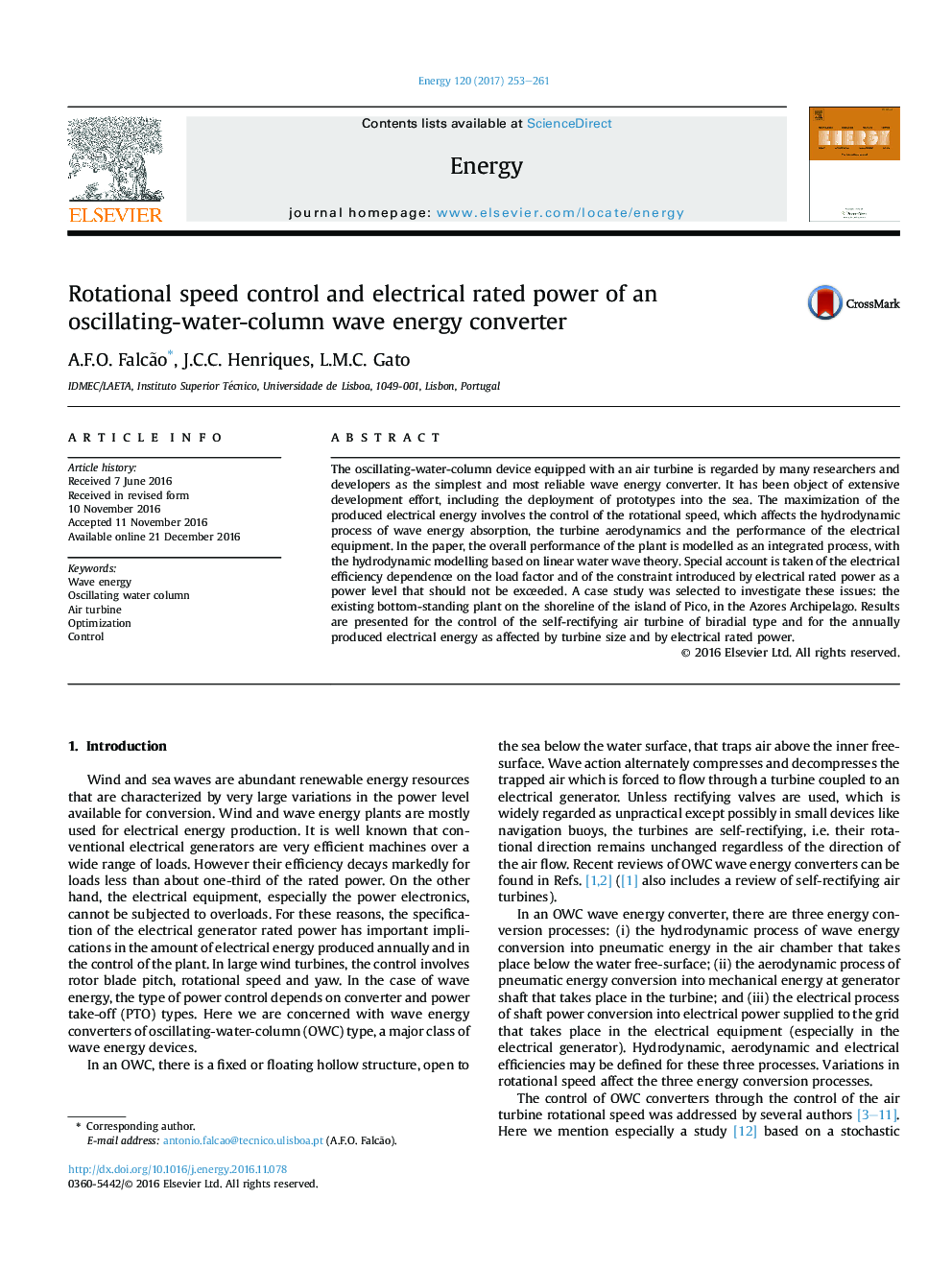| Article ID | Journal | Published Year | Pages | File Type |
|---|---|---|---|---|
| 5476162 | Energy | 2017 | 9 Pages |
Abstract
The oscillating-water-column device equipped with an air turbine is regarded by many researchers and developers as the simplest and most reliable wave energy converter. It has been object of extensive development effort, including the deployment of prototypes into the sea. The maximization of the produced electrical energy involves the control of the rotational speed, which affects the hydrodynamic process of wave energy absorption, the turbine aerodynamics and the performance of the electrical equipment. In the paper, the overall performance of the plant is modelled as an integrated process, with the hydrodynamic modelling based on linear water wave theory. Special account is taken of the electrical efficiency dependence on the load factor and of the constraint introduced by electrical rated power as a power level that should not be exceeded. A case study was selected to investigate these issues: the existing bottom-standing plant on the shoreline of the island of Pico, in the Azores Archipelago. Results are presented for the control of the self-rectifying air turbine of biradial type and for the annually produced electrical energy as affected by turbine size and by electrical rated power.
Related Topics
Physical Sciences and Engineering
Energy
Energy (General)
Authors
A.F.O. Falcão, J.C.C. Henriques, L.M.C. Gato,
